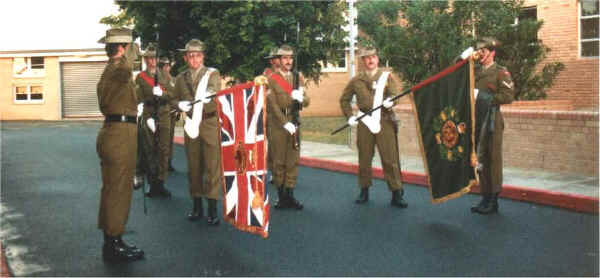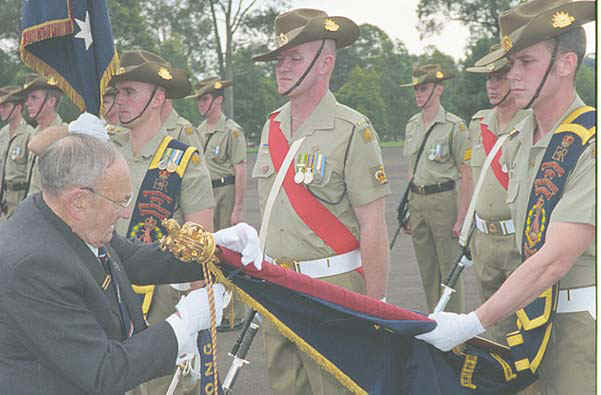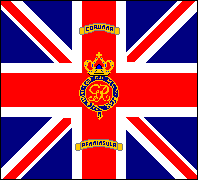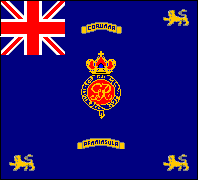 |
|
|||
 |
|
|
The Colour Party and the Colours of University of Western Australia Regiment. |
|
 |
|
| Lt Colonel (Rtd) B O'Dowd affixes the streamer that forms part of the award of the Distinguished Unit Citation (Presidential Unit Citation) for Kapyong to the Regimental Colour of 3 RAR. | |
 |
 |
| The King's & Regimental Colours of the 4th Regiment of Foot, The King's Own who served in Australia 1832/1837 | |
| Although the Guns are The
Colours there comes a time when a Unit needs a flag other than the
national flag. Here is where a Standard is called for.
THE ROYAL AUSTRALIAN ARTILLERY
STANDARD In July 1945 it was proposed by the
Royal Artillery that there was a need for a flag of some description for
its units; this was agreed to by the Master Gunner's Committee. The College of Heralds produced a
design which was approved by HM King George IV and the Standard was
finally adopted in August 1947. The RAA adopted the Standard in 1952.
The Standard conforms in shape and style to heraldic usage and custom. The Standard is flown on special occasions only, by HQ and units (including independent batteries) and the School of Artillery. These occasions are generally visits by Royalty or Vice-Royalty and visits or inspections by General Officers, Colonels Commandant, RAA Formation Commanders and the Director of Artillery. It may also be flown on visits by senior civilians or Allied Officials of comparable rank or appointment. |

